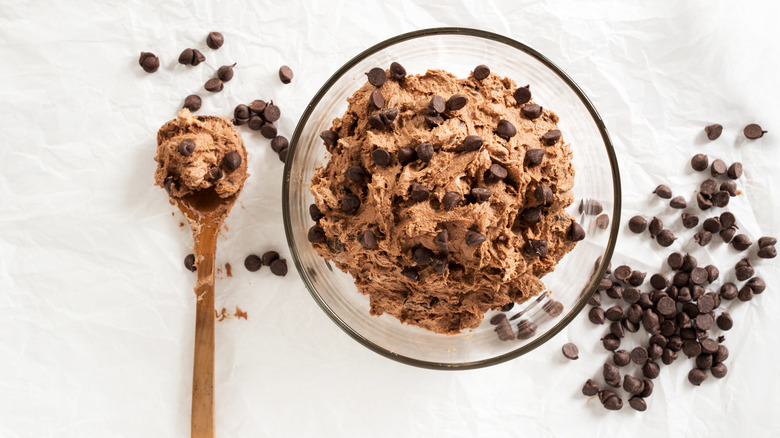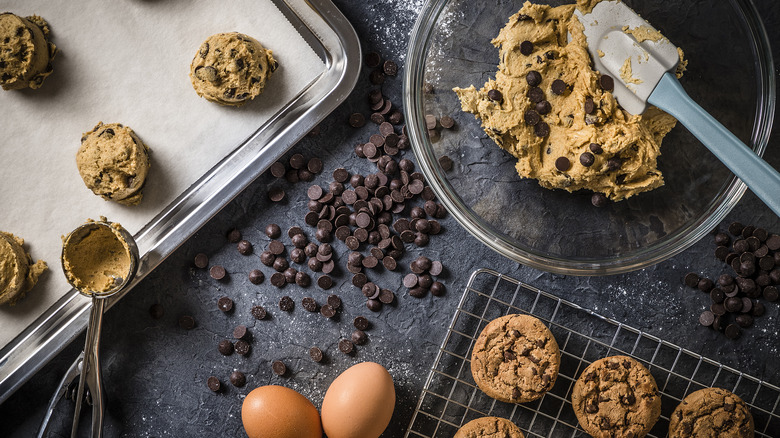What Happens If You Use Too Much Flour In Cookie Dough And How To Fix It
There are few things out there more satisfying than indulging in a batch of freshly homemade cookies. But, before we can get to the enjoying part, we need to successfully get through the baking part — and to avoid all of the common mistakes. One of the most common mistakes when making cookie dough is accidentally adding too much flour, which can hamper the consistency. Luckily, there are a few easy ways to fix this.
One way is to add in some extra fat, such as more butter or even an extra egg yolk (which contains fat) — this will make the dough easy to work with again. Another way to fix the problem is to add in a bit of extra liquid, such as milk or water, which will help get the dough back to the consistency it needs to be. Either of these options will work just as well, but make sure to only pick one. In other words, don't add extra butter on top of extra liquid, or you risk further messing up the dough.
Other tips to make sure your homemade cookies come out as tasty as possible
While it's good to know how to fix the problem if you add too much flour, it's also good to know how to prevent the problem in the first place. Adding too much flour is probably the result of eyeballing measurements instead of being precise. While it may be tempting to add the amount you think works — especially with smaller amounts — it's important to be exact so you don't change the outcome of the cookie. For example, adding too much butter can lead to flatter cookies, which may not be what you want.
Another way to end up with too-flat cookies is to skip the step of chilling the dough before baking. Again, it may seem like an unnecessary step, but it's essential to allow the fat from the butter to cool enough so that the cookies will expand into the desired shape when they're in the oven. Plus, when the cookie dough has been chilled, the cookies come out richer and more flavorful, which is always the end goal.

